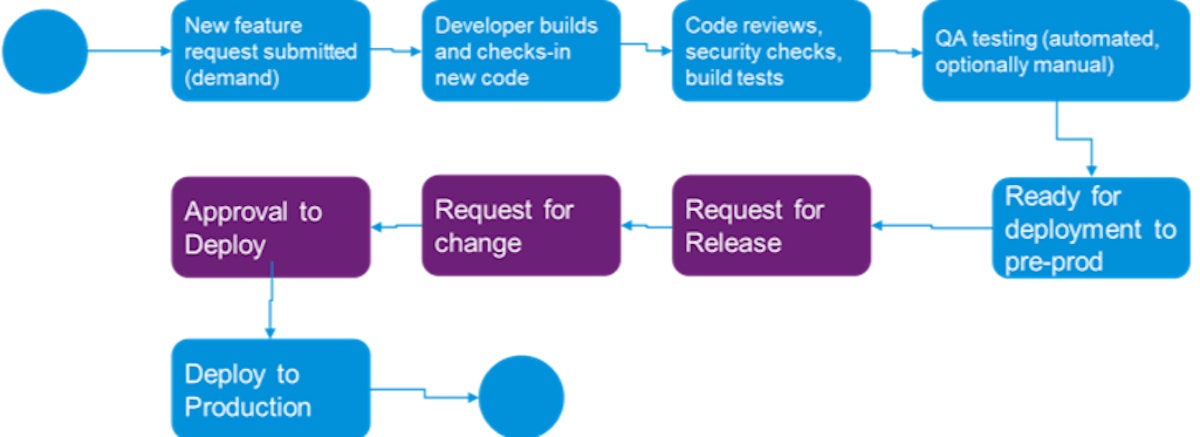2-1 Practice Writing Equations
About |
This blog series, sponsored by KPMG, provides perspectives to help technology and business leaders drive technology strategy within their business.
Practice makes perfect
How new, practice-based ITIL 4 takes IT operations to the next level

By John Roy and Adam Hutton
For years, Information Technology Infrastructure Library (ITIL) has been the world's most widely accepted approach to IT service management. Earlier versions of ITIL forced IT organizations to develop and integrate complicated, formal processes for controlling and measuring delivery services. However, emerging technologies have changed the way IT organizations operate, and ITIL needed to evolve as well.
Launched in February, ITIL 4 showcases a broader, practice-driven design to deliver powerful, market-driven improvements. To profit from its two significant improvements—automation and practice methodology—IT organizations will have to rethink the way they approach their delivery.
With the rise of automation; the advent of ITIL 4
Continuous Delivery models and DevOps, paired with agile development practices, have accelerated the speed in which solutions can be built and deployed. Continuous deployment, self-healing systems and other technologies have automated many—and in some organizations all—of our manual operations tasks. Machine learning and intelligent automation further reduced the need for the human analysis, undergirding much of ITIL's guidance.
Together, ITIL and IT operations gained a reputation as gatekeepers: either as a legacy system admin group or, in certain respects, a vendor and risk management function. While the ITIL Version 3 framework for performing processes maintained a strong position in IT operations, it clearly showed its age as other approaches emerged to fill gaps and add greater value.
ITIL with a renewed focus
ITIL 4 takes inspiration from failure injection testing that FAANG companies (Facebook, Apple, Amazon, Netflix, and Google) apply. FAANG companies align their IT functions with the overall business strategy by posing worst-case scenarios and developing solutions. If someone began randomly shutting off servers in your data center or cloud provider, how would your applications fare? Site Reliability Engineering is a new discipline born out of infrastructure operations concerns, which seeks to address these very issues.
ITIL 4 adopts this thinking with a new "value system" lifecycle that favors "holistic practices" over "processes and procedures" to define how services are delivered.
"There's a new sheriff in town with ITIL 4's emphasis on 'practice' over 'process'. It's an entirely new platform, and its fluidity gives companies the ability to search and solve for virtually an infinite number of IT glitches and slowdowns without impeding speed to success." —Adam Hutton, Director of Digital Enablement, KPMG, LLP
By shifting from a linear process path to interlinked sets of fluid competencies, ITIL 4's value is maximized as a flexible framework of practices, not as a prescription for how to work. After all, a practice is more dynamic than a process, but this logic was often lost during ITIL Version 3 implementation.
Rewrite and rethink your practice
One of the biggest challenges with ITIL 4 implementation is understanding that a well-functioning "practice" may have multiple processes, and each process may have permutations to account for different delivery scenarios. IT may need to rewrite their processes and rethink the way those processes are executed. Shifting focus from a rigid process definition exercise to adopting good practices, ensures that objectives are met even when the linear flow is disrupted.
For example, if your process is to "get to the airport on time by taking your car" and your car breaks down, you can't get to the airport on time. However, if your practice is to "get to the airport on time" and your car breaks down, you can take a cab, bus, Uber, or ask a friend to drive you. Success through agility—that's what ITIL 4 is all about.
"At KPMG we understand the realignment that needs to happen for IT departments to shift from ITIL V3 to ITIL 4. We've done it, and we know how to do it efficiently. It may sound daunting, but you will see positive results as you bend away from the rigid IT processes of the past and embrace a more holistic, practice-driven culture." — John S. Roy, Agile Strategy Leader, KPMG, LLP
Consider the task of change control in an organization that practices continuous delivery. The goals of change control remain consistent: assessing and mitigating risk, coordinating the execution of the change, and monitoring during and immediately after the change. Yet, the way in which these objectives are met is likely to be very different in a fully-automated deployment path to production.
Organic IT transformation
Many of our clients leverage Agile and DevOps to release new content and features weekly, daily or even more frequently. However, the tedious execution process includes triggering automated Requests for Change at each major build, followed by automated testing and an automated Release Management ticket.
 KPMG
KPMG ITIL 4 practices can reduce risk, schedule and coordinate, all while facilitating automated execution of change and release initiatives. This enables persistent improvement while IT continues to meet service delivery objectives.
Additionally, technology professionals can focus more organically on what exactly their organization is tasked with delivering. While the role of an incident analyst is to diagnose disruption of services, their quest is not to ticket them. It's to restore service and prevent the same issue from happening again – or even prevent it from happening in the first place.
Look beyond the certifications
Technology leaders need to look beyond the terminology changes and consider the reasoning behind those changes. The true benefits of ITIL 4 implementation come from considering how IT must persist in adapting to current and emerging technology trends as it fights for relevancy in a business environment that can, and will, outsource management if in-house resources aren't up to the task.
To gain more insight into ITIL 4 improvements to help erase the rigid, rote work streams that ITIL Version 3 tried, but failed, to rise above, please visit KPMG's modern delivery webpage.
Some or all of the services described herein may not be permissible for KPMG audit clients and their affiliates or related entities.
The information contained herein is of a general nature and is not intended to address the circumstances of any particular individual or entity. Although we endeavor to provide accurate and timely information, there can be no guarantee that such information is accurate as of the date it is received or that it will continue to be accurate in the future. No one should act upon such information without appropriate professional advice after a thorough examination of the particular situation.
The KPMG name and logo are registered trademarks or trademarks of KPMG International.
Copyright © 2019 IDG Communications, Inc.
2-1 Practice Writing Equations
Source: https://www.cio.com/article/3397038/practice-makes-perfect.html
Posted by: holguindortmationat.blogspot.com

0 Response to "2-1 Practice Writing Equations"
Post a Comment